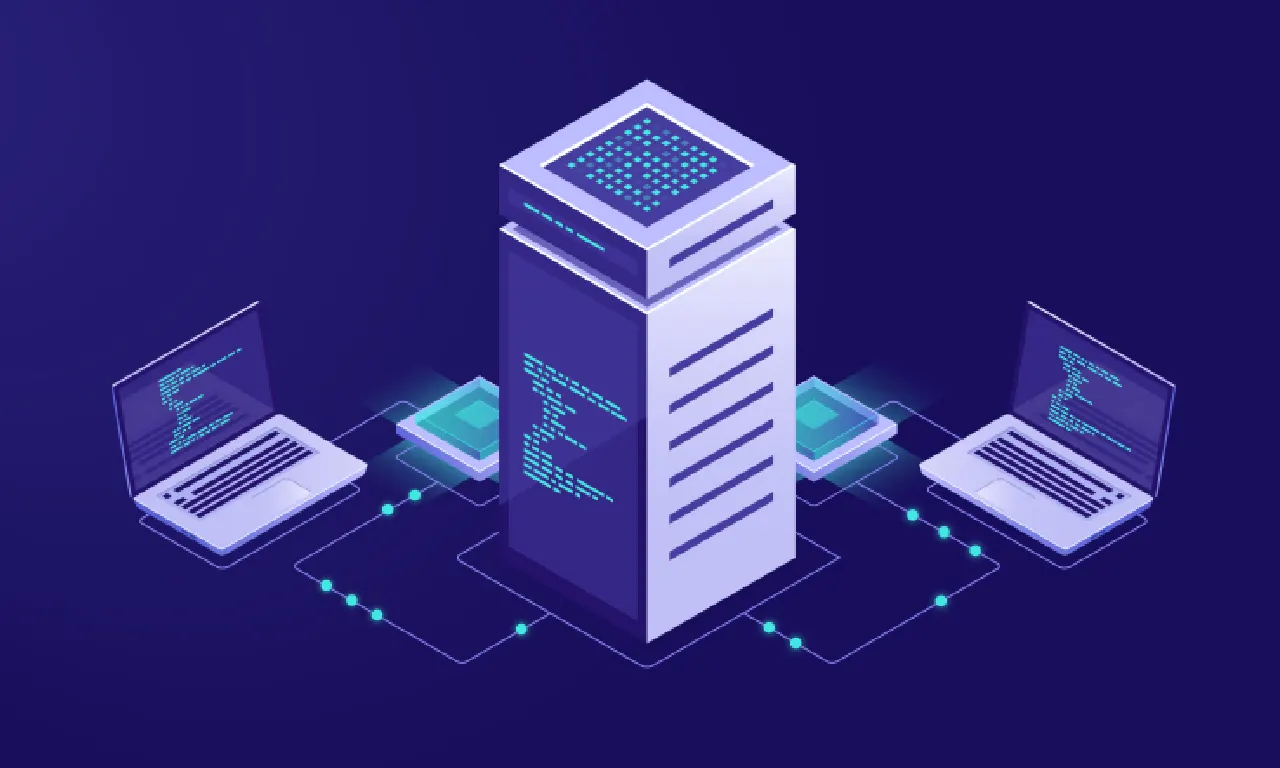Data Mining vs Data Analytics: Key Differences Explained

You’ve probably heard the terms data mining and data analytics tossed around in meetings, job descriptions, or online courses. They're often used interchangeably, but they shouldn’t be. One uncovers patterns buried deep in raw data; the other helps you decide what to do with those patterns.
Mixing the two up isn’t just a semantic slip; it can lead to the wrong tools, the wrong hires, and the wrong conclusions. For anyone working in tech, business intelligence, or data-driven decision-making, it’s worth knowing the difference.
In this guide, we’ll break down what each term really means, data mining vs analytics, process, and outcomes, and when to use which.
If you want to navigate the world of data with clarity, this is where it starts.
What is data analysis?
Data Analytics is the process of breaking down raw data to figure out what's actually happening and what you should do next. From spotting trends and identifying bottlenecks to forecasting outcomes, analytics helps teams turn information into action.
Say a food delivery startup notices delays in one city. Using data analytics and visualisation, they map out delivery times by zone, identify a specific bottleneck, and fix it. That's analytics doing its job: informing smart, timely decisions.
For teams that get it right, the payoff is huge, with 91.9% of organisations seeing measurable value from data and analytics initiatives in 2023.
There are three stages of analytics, depending on the question you’re trying to answer. Let’s quickly break them down.
Stages of data analysis
Behind every smart decision powered by data, there’s a structured flow that helps teams go from “What are we looking at?” to “Here’s what we should do.” Whether you’re analysing a simple report or running complex data analytics projects, most analysis follows these five key stages:
-
Discovery: This is where it all begins. Analysts dig into the business problem, ask the right questions, and define what success looks like. The goal is to understand the context, identify measurable factors, and plan how you’ll track them.
-
Data preparation: Next, the data gets cleaned, structured, and stored, often in a temporary "analytics sandbox." Here, teams handle extraction, transformation, and updates to get the dataset ready for action.
-
Modelling: This is where analysts start to build models, test assumptions, and identify patterns or trends. Predictive analytics plays a big role here, using historical data to forecast future outcomes like demand shifts, user churn, or sales performance.
-
Interpretation: Once the numbers start speaking, it’s about making sense of them. Do the results answer your original question? What story is the data really telling, and where are the blind spots?
-
Communicating results: Finally, analysts package the insights into dashboards, reports, or presentations and share them with decision-makers. This is where raw data becomes real action.
What is data mining?
If analytics helps answer specific questions, data mining is what helps you discover which questions are worth asking in the first place.
Data mining is the process of scanning large datasets to uncover hidden patterns, relationships, or anomalies that aren’t immediately obvious. It's handy when working with complex, high-volume information.
For example, an e-commerce brand might use data mining cluster analysis to find customer segments with similar shopping behaviour. These insights could then be used to tailor offers or build recommendation systems.
Data mining often involves tools like Python, R, Hadoop, or KNIME, as well as techniques like classification and association rules.
It’s commonly also used in fraud detection, customer segmentation, and even medical research, basically, anywhere you need to find patterns without knowing exactly what you're looking for.
Quick glossary
- Classification: A supervised learning method that assigns data into predefined categories or “classes.” Think of sorting users as “likely to churn” vs. “likely to renew.”
- Association Rules: A rule-based method that identifies relationships between variables. For example: “Users who buy laptops often buy laptop sleeves too.”
- Clustering / Cluster Analysis: An unsupervised learning technique that groups data points based on similarity, without predefined labels. Often used in customer segmentation and behaviour modelling.
So, how does this process actually unfold? Let's walk through the stages of data mining.
Stages of data mining
Like any powerful process, data mining follows a clear set of stages, from gathering raw information to uncovering patterns and presenting insights. Here’s how it usually goes:
Data collection: Relevant data is gathered from multiple sources, like CRM systems, internal databases, or data lakes. This often includes both structured and unstructured formats.
Data preparation: The data is cleaned, standardised, and explored. This includes removing duplicates, handling missing values, and formatting everything for analysis.
Pattern discovery: This is the core of mining. Algorithms are used to identify trends, anomalies, or groupings. Common techniques include:
-
Association: Reveals relationships (e.g., people who buy X also buy Y).
-
Classification: Sorts data into predefined categories (like churn vs. loyal users).
-
Clustering: Groups similar items without predefined labels; functional in data mining and cluster analysis.
-
Prediction: Forecasts future outcomes based on patterns.
-
KNN: Classifies data based on its similarity to nearby points.
-
Interpretation and communication: The final patterns are reviewed and validated. Analysts use data storytelling or visualisation tools to explain what the patterns mean and how they can support business goals.
For teams working with complex or large datasets, platforms like Intellsys.ai can help streamline everything, from mining patterns to preparing insights for real-world use.
Explore how Intellsys accelerates data mining and predictive analytics
Data mining vs analytics: 6 key differences
On the surface, data mining and analytics seem interchangeable, but they serve different purposes, require different skill sets, and support different stages of the data journey.
Understanding these differences is critical when choosing tools, hiring talent, or planning your data analytics roadmap.
Here’s a breakdown of it:
1. Primary objective and focus
Data mining is exploratory. You're searching for patterns and relationships you didn't know existed, digging deep into the data to surface hidden signals.
Data analytics, on the other hand, starts with a clear question and works toward a specific answer. The goal isn't to discover, but to decide. To use known data to inform strategies or actions.
2. Data types and structure
Data mining often works with messy, high-volume datasets pulled from data lakes, logs, or IoT devices. It handles structured, semi-structured, and unstructured data with ease.
Analytics is a bit more orderly. It generally deals with structured data that’s been cleaned and prepared, often as part of standard data analytics projects or reports.
3. Methodology and techniques
Mining is algorithm-heavy. Techniques like clustering, classification, and association rule mining are used to find meaning in chaos.
Analytics leans into statistics and visualisation. You're applying formulas, running regressions, and building dashboards. This is not necessarily about discovering new patterns but translating data into context that the business can act on.
4. Skills and expertise required
To mine data effectively, you’ll need machine learning chops, algorithm design experience, and a comfort level with tools like Python or Hadoop. It’s technical work that is best suited for data scientists.
Analytics requires different fluency: data analytics skills like SQL, Excel, or Power BI, and the ability to connect data to business outcomes. (You can see a real-world example of this stack in action at Intellsys.ai).
Quick Tip:
If you’re building a data team, start with your problem, not the job title.
A data scientist is great for mining and model-building.
A data analyst is better for dashboards, trends, and decision support.
5. Output and deliverables
Mining doesn’t always produce polished charts. It might surface a cluster, a rule, or an anomaly; something that feeds into the next step. Think: raw insights, not final reports.
Analytics is built for presentation. You’re delivering dashboards, forecasts, or visual stories that guide business decisions. It’s where data mining and visualisation often come together.
6. Timeline and implementation
Data mining is a long game. It’s iterative, experimental, and often part of predictive analytics or R&D. You’re not rushing to deliver; you’re digging for insight.
Analytics runs on deadlines. Whether it’s a weekly performance report or a product launch forecast, the output needs to be timely and actionable.
Want a quick snapshot? Check out the table below for a side-by-side breakdown of how data mining vs analytics stack up across key areas.
| Aspect | Data mining | Data analytics |
|---|---|---|
| Primary focus | Exploration - finding unknown patterns or relationships | Decision-making - answering specific, predefined questions |
| Data type | Structured, semi-structured, and unstructured; often high-volume | Mostly structured and cleaned data |
| Techniques used | Clustering, classification, association rules, anomaly detection | Statistical analysis, regression, forecasting, visualisation |
| Typical tools | Python, R, Hadoop, KNIME | SQL, Excel, Power BI, Tableau |
| Team skillset | Machine learning, algorithm design, coding - best suited for data scientists | Business context, reporting, dashboarding - ideal for analysts |
| Output | Raw insights like rules, clusters, or flagged anomalies | Dashboards, charts, forecasts, performance reports |
| Timeline & use cases | Long-term exploration, used in R&D and predictive modelling | Short-term decisions, operational reporting, and strategic analysis |
How data mining and analytics work together
In one of its more well-known data wins, Walmart discovered that sales of strawberry Pop-Tarts surged before hurricanes[1], an insight uncovered through data mining.
However, the real value came when the company combined that discovery with analytics, using real-time dashboards to stock the item strategically and increase sales ahead of storms.
This is how big data mining and analytics complement each other. Mining helps uncover unexpected patterns - things you weren’t necessarily looking for. Analytics takes those findings and connects them to business actions, whether it’s pricing, product placement, or campaign timing.
It’s a handoff: mining reveals the what, analytics defines the so what. And in large-scale environments like retail, finance, or logistics, this collaboration drives measurable impact.
If you're curious how this plays out across industries, GrowthJockey's data analytics solutions offer a peek into real-world workflows that blend both techniques effectively.
When to use data mining vs analytics
Not every data challenge needs both mining and analytics. The method you choose depends on the problem you're trying to solve and the type of data you're working with.
If you’re exploring a large dataset without a clear question, looking for trends, segments, or unusual behaviours, data mining is your go-to. It’s best for early-stage discovery, like finding customer clusters or spotting fraud patterns in messy, high-volume data.
On the other hand, if you already have a business question in mind, such as Why did sales drop last month? Which channel is converting best? You'll want to use data analytics. It’s built to interpret known data and guide decisions.
In many cases, the two work best together. For example, mining might uncover an unexpected churn trend, which analytics then uses to forecast impact or refine retention strategy.
A helpful rule of thumb: mine when you’re exploring; analyse when you’re explaining.
If you’re still unsure which approach fits your business or how to turn that insight into something tangible, GrowthJockey helps teams bridge that gap.
Ready to make data work harder for you?
Still unsure between data mining vs analytics? Here's the short answer: it depends on the problem you're solving. Some questions need clean answers, fast. Others need you to dig a little deeper before knowing what you're looking for.
Understanding how data mining and analytics work, separately and together, gives you the power to be more intentional with your data strategy.
Whether you're working on segmentation, forecasting, or building out your first few data analytics projects, this guide (and worksheet) should give you a more straightforward path forward.
Don’t stress about mastering everything at once. Just get clear on your goal, your data, and what decision you’re trying to make next.
If you’re looking to take those insights further, maybe into a product, internal tool, or even a new venture, GrowthJockey - Full Stack Venture Builder in India is built for that next step.
We partner with enterprises to incubate and accelerate data-backed ideas into scalable ventures, blending startup agility with deep operational support.
FAQs on data mining vs analytics
Does a data analyst do data mining?
Yes, but not always. While data analysts focus more on interpreting structured data and building reports, they may use basic data mining techniques like clustering or classification, if the role involves big data mining and analytics.
What is the difference between data and data analytics?
Data refers to raw facts or figures like numbers, clicks, and transactions. Data analytics is the process of making sense of that data by uncovering patterns, trends, or actionable insights through methods like modelling, visualisation, or predictive analysis.
Does data analytics require coding?
Not necessarily. Many data analytics projects can be done using no-code tools like Excel, Power BI, or Tableau. However, learning basic coding in SQL or Python helps when working with larger datasets or automating tasks.
Is data mining an AI?
Data mining isn’t AI, but it often uses AI-powered algorithms, especially in predictive analytics. It’s more accurate to say data mining is a foundational step that can feed into AI systems for deeper insights or automation.








